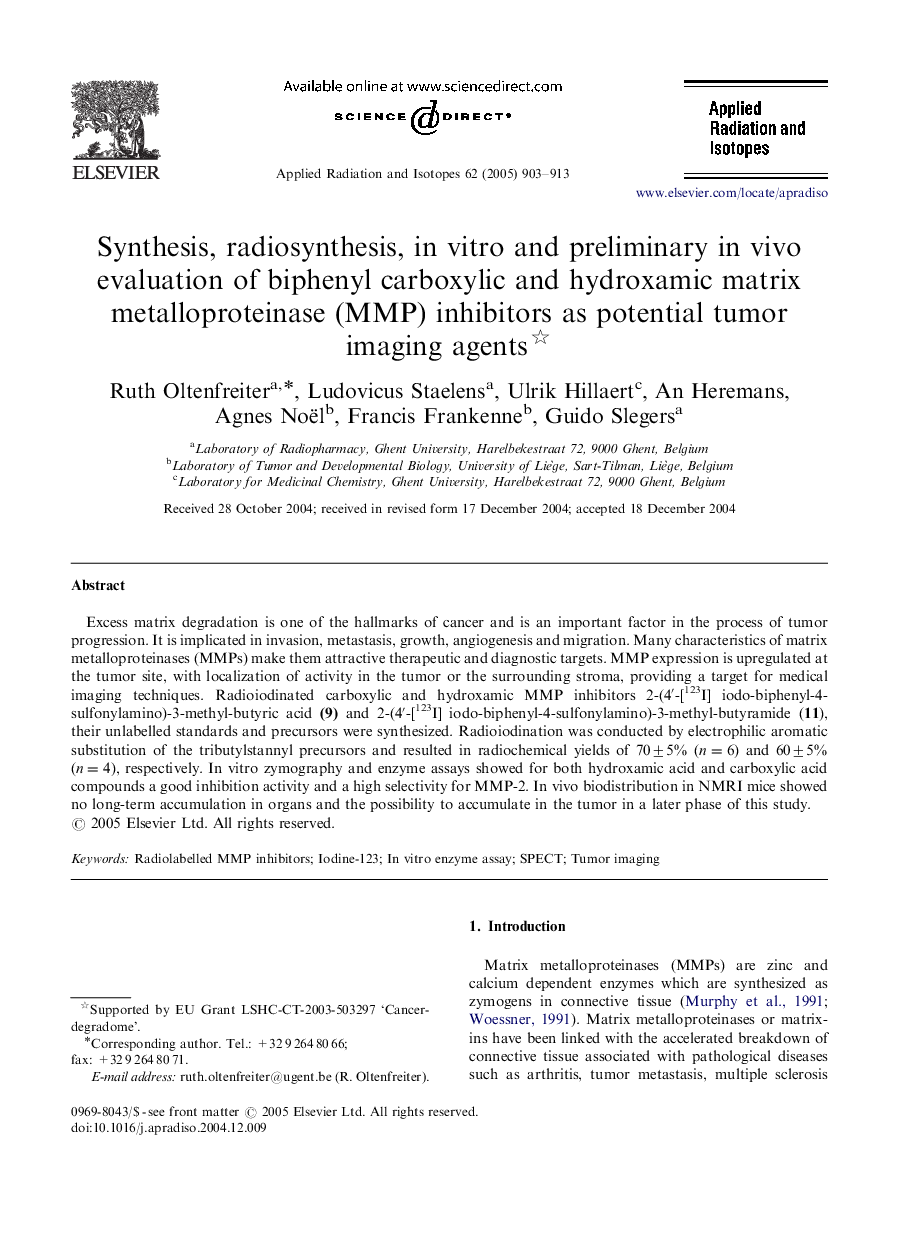| Article ID | Journal | Published Year | Pages | File Type |
|---|---|---|---|---|
| 10729722 | Applied Radiation and Isotopes | 2005 | 11 Pages |
Abstract
Excess matrix degradation is one of the hallmarks of cancer and is an important factor in the process of tumor progression. It is implicated in invasion, metastasis, growth, angiogenesis and migration. Many characteristics of matrix metalloproteinases (MMPs) make them attractive therapeutic and diagnostic targets. MMP expression is upregulated at the tumor site, with localization of activity in the tumor or the surrounding stroma, providing a target for medical imaging techniques. Radioiodinated carboxylic and hydroxamic MMP inhibitors 2-(4â²-[123I] iodo-biphenyl-4-sulfonylamino)-3-methyl-butyric acid (9) and 2-(4â²-[123I] iodo-biphenyl-4-sulfonylamino)-3-methyl-butyramide (11), their unlabelled standards and precursors were synthesized. Radioiodination was conducted by electrophilic aromatic substitution of the tributylstannyl precursors and resulted in radiochemical yields of 70±5% (n=6) and 60±5% (n=4), respectively. In vitro zymography and enzyme assays showed for both hydroxamic acid and carboxylic acid compounds a good inhibition activity and a high selectivity for MMP-2. In vivo biodistribution in NMRI mice showed no long-term accumulation in organs and the possibility to accumulate in the tumor in a later phase of this study.
Keywords
Related Topics
Physical Sciences and Engineering
Physics and Astronomy
Radiation
Authors
Ruth Oltenfreiter, Ludovicus Staelens, Ulrik Hillaert, An Heremans, Agnes Noël, Francis Frankenne, Guido Slegers,
